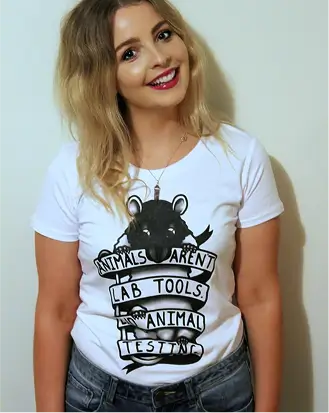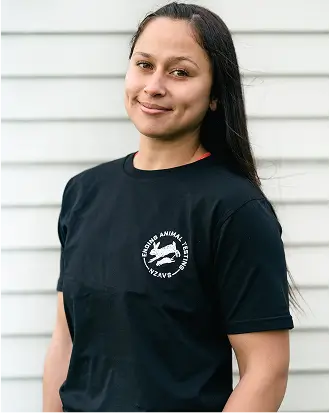Many different tools can be used to teach students that don’t harm any Many different tools can be used to teach students that don’t harm any animals including anatomical models, virtual dissections and anatomy apps, augmented reality tools and more!
Some institutes in NZ are utilising alternative methods already — find out more here.
Searchable databases showcase the many options:
- Check out the databases from the Humane Society Veterinary Medical Association.
- Visit the Science Bank to see their database. You can search by animal type, education level and more!
- Note that they are located in the US, so their borrowing service is not available in New Zealand. But there share useful links and free resources.
- Also, check out the Interniche Alternatives Database.
ALTERNATIVES TO ANIMAL DISSECTION
There is an enormous variety of animal dissection alternatives. Some are more basic, and others are highly sophisticated and interactive.
Below are some of our favourites!
BASIC ANATOMY MODELS
Some of these imitate animal dissections and mimic the body position of animals and have visible skin flaps.
For example:
- Rat, dissection model (Auckland)
- Rat, dissection model (Auckland, no removable parts)
- Rat, dissection model (UK)
- Pig, dissection model (USA)
- Frog, dissection model (USA, no removable parts)
More traditional classroom models are usually made from durable hard plastic and have removable organs.
For example:
- Fish anatomy model (UK)
- Fish anatomy model (Auckland)
- Chicken anatomy model (UK)
- Frog anatomy model (Auckland)
- Anatomy in Clay — hand-crafted skeletal models of both animals and humans.
- SynDaver - Beyond Human - lifelike anatomy models of dogs and cats.

For a cost effective option, we like the paper dissection models designed by Mel and Gerdy:
- They have downloadable paper dissection designs that can be printed and then cut out and assembled by students.
- There are many species to choose from, with licences being valid per classroom/teacher.
- They even offer sturdy vinyl versions to be used for demonstration by the teacher which can be ordered and shipped from the US.

4D puzzles are designed as toys but we think they are reasonably accurate for teaching and are a fun way to get children engaged:
- 4D Vision Anatomy Puzzles — An Australian supplier selling 4D puzzles with many species to choose from.
DISSECTABLE MODELS
These can be cut open with a scalpel and fake organs can be extracted. There are two providers for this kind of model, both are US-based.
- Rescue Critters, dissectable frog
- SynDaver dissectable frog (in cooperation with PETA)

SOFTWARE SOLUTIONS
These include 3D anatomy programs, dissection apps for handheld devices and full-scale virtual reality experiences. For example:
- Punflay Frog and Rat Dissection (dissection apps for iPads and iPhones)
- Avidia Rat and Frog Dissection (anatomy and dissection apps for iPads and MacOS)
- Froggipedia (dissection and learning app for iPads and iPhones)
- GraphicVizion Visual Anatomy Frog (anatomy software for Microsoft PC or iPhones)
- Biosphera 3D anatomy apps (anatomy apps for iPhones and iPads)
- Biosphera 3D PC software (anatomy software for Windows and MacOS)
- InterSpectral Animal Anatomy Exhibition (anatomy software for Windows10 or as interactive multi-touch table)
- VictoryXR Virtual reality dissection simulation software (for Oculus Rift and Quest, Vive, HP Reverb, Windows VR)
- Ultraleap Cat Explorer virtual reality model (for Oculus Rift/HTC Vive)
- Human anatomy software:
- Intervoke - The Physiology of the Eye (virtual reality human eye anatomy software for HTC Vive, Oculus Rift, or Valve Index)
- VisualBody A&P (human anatomy software for Windows and Apple, regular browsers, iPhones, iPads and Chromebook)
- A.D.A.M Interactive Anatomy (human anatomy software for Windows and Apple, regular browsers)
- 3D Anatomica (human anatomy app for iPads and iPhones)
- InterSpectral Human Anatomy Exhibition (anatomy software for Windows10 or as interactive multi-touch table)
- Biosphera 3D human anatomy app (for iPhones and iPads) or software (for Windows and MacOS)

OTHER
- Virtualitee is a US-based product. Combined with their T-shirts, the software creates a (simplified) virtual view inside the body (for Android and iOS).
- zSpace is a US company selling hardware and a wide variety of applications creating an augmented reality learning space.
- The Merge cube (US-based) lets you hold digital 3D objects you can then interact with. It works together with special glasses and interactive software. The company also has a VR headset that can be used alone or in combination with the cube.






